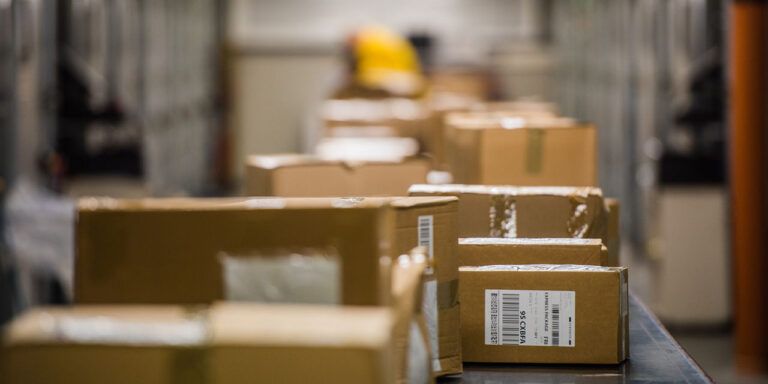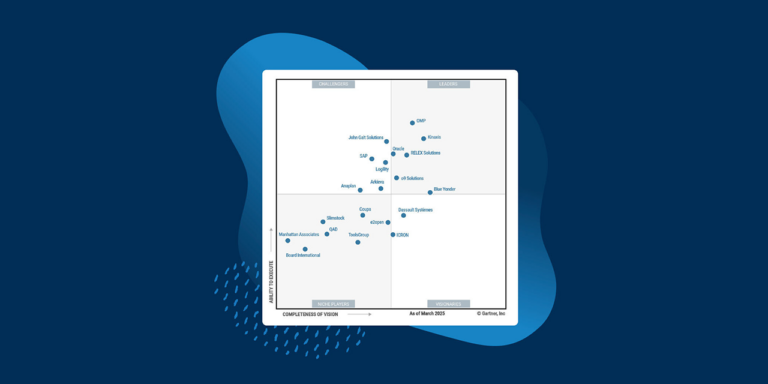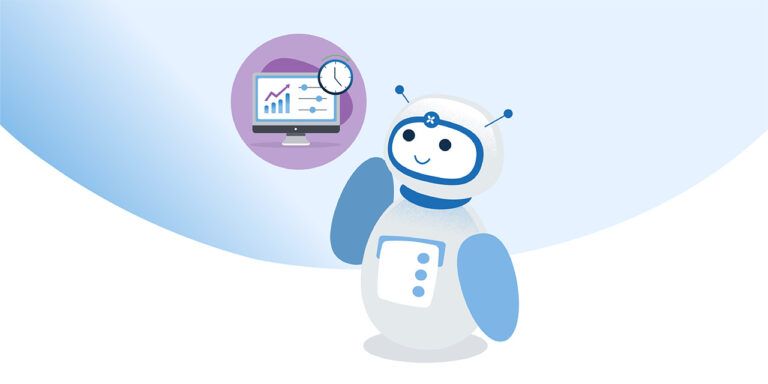Q&A: The future of wholesale supply chain collaboration
Apr 18, 2024 • 8 min
Perhaps no one stands to benefit more from collaboration than wholesalers, who serve as both customers and suppliers in their roles as supply chain intermediaries. So why do so many wholesalers struggle to collaborate effectively?
We spoke with Antti Pohjalainen, a RELEX Field Presales pro with 10 years of industry experience, to explore the often complicated topic of wholesale collaboration — and, most importantly, how wholesalers can hope to achieve improved collaboration in the future.
Q: Let’s start with an easy one. Is improved collaboration with upstream suppliers and downstream customers worth the effort for wholesalers?
Antti Pohjalainen: At the risk of oversimplifying what’s a surprisingly complex topic: yes.
Wholesalers are unique because they serve as intermediaries in the supply chain, so we really need to look at both sides of their business to understand the value of collaboration.
Consider a wholesaler’s relationship to retailers. Access to retail data allows wholesalers to get a more granular picture of consumer demand, enabling them to maintain or increase service levels while holding less inventory.
Open collaboration also enables wholesalers and retailers to better align their promotional strategies. More effective planning of promotions ensures that the right products are available at the right time to meet customer demand.
It’s hard to overstate how important supply chain visibility is to operational efficiency.
Now, let’s look at a wholesaler’s relationship with their suppliers. It’s hard to overstate how important supply chain visibility is to operational efficiency. Having deeper insight into your supplier’s operations means you can better anticipate potential supply disruptions. The ability to adjust stock levels in advance to avoid overstocking and spoilage or lining up alternative suppliers to minimize the impact of shortages is crucial to achieving high availability.
Ultimately, it all comes down to customer satisfaction. A close collaborative relationship increases the chances that wholesalers can identify and resolve supply chain issues quickly, allowing them to maintain those all-important customer service levels.
Given these benefits, you would think collaboration would be a massive priority for wholesalers. They have trading partners on both the retail side and supply sides! But that’s not the reality for most wholesalers, whose collaborative efforts typically leave something to be desired.
Q: Why do wholesalers struggle with collaboration?
Antti: The status quo doesn’t help anything. Many wholesalers struggle to overcome siloed planning even within their own organizations. Extend that isolated planning to suppliers and customers, and you end up with wholesalers facing delays in receiving information. They might even end up with a loss of data.
Isolated planning is often the result of the same manual processes and outdated IT systems that prevent open collaboration. The need to update systems causes a lot of the struggle to be cost-related. Wholesalers are extremely cost-conscious because their profit margins are so thin. Even if they’re stuck using manual processes or outdated tech, dropping money on a shiny new system doesn’t excite them. Obviously, systems like RELEX act as more than just a collaboration platform, but collaboration is rarely the sole reason for implementing new planning software.
Basically, wholesalers need a solid business case to justify the investment. In my experience, the potential for more painlessly sharing data with their customers is often a key part of making that case.
DOWNLOAD: Supply Chain Collaboration Report 2023
Q: Can you elaborate on the data challenges wholesalers face concerning their retail partners?
Antti: Data’s perhaps the biggest challenge wholesalers struggle with on the customer side. Many wholesalers flirt with using POS-level data to enhance their forecast accuracy. But retailers have thousands, maybe tens of thousands, of SKUs, which amounts to mountains of data. This data takes up digital space and requires immense processing power. More hardware equals added costs, so wholesalers wonder whether the enhanced forecasting is worth the price tag.
Many often settle for aggregated data — for instance, product-chain-level data. Ideally, the retailer would use software like RELEX so they could share critical details like aggregated order projections. Those order projections complement a wholesaler’s demand forecasts and better allow them to predict incoming orders.
The conversation becomes more complicated when both the wholesaler and retailer aren’t using the right software. Server space and processing power don’t come cheap, and there’s potential for awkward conversations between everyone involved regarding who’s responsible for those costs.
Q: Are there any other big sticking points concerning wholesaler-retailer collaboration?
Antti: There’s a trust issue in several cases. Some wholesalers might have one or two major customers who make up the bulk of their business. In most cases, it’s the opposite: one wholesaler servicing many retailers, which increases the chances of a wholesaler supplying direct competitors.
Retailers can see this as a conflict of interest. A retailer investing in improving data sharing and processes with their wholesale partner can’t be sure whether they benefit exclusively or not. They might suspect the wholesaler will copy those best practices to improve their relationship with the retailer’s competitors, so they avoid collaboration altogether.
But poor collaboration doesn’t just hurt the wholesaler — it hurts the retailer, too. Without essential data, wholesalers need to carry more stock and charge higher prices to their customers to offset the added risks and costs that come with that lack of visibility into retailer and consumer demand.
Poor collaboration doesn’t just hurt the wholesaler — it hurts the retailer, too.
Of course, if we’re talking about private labeling — where the wholesaler exclusively supplies products for a specific retailer — there’s no excuse for retailers not to collaborate upstream.
Q: What about suppliers and manufacturers? Are there similar challenges for wholesalers?
Antti: Data sharing is still important, but it’s not as big of a headache. Wholesalers typically require a smaller volume of data from their suppliers, so the technological logistics and cost barriers aren’t as daunting.
But wholesalers often deal with many suppliers, which means establishing a collaborative relationship with a high number of entities. Just organizing recurring meetings with these numerous suppliers and dedicating staff to collaborative efforts costs time and money. If you’re a wholesaler looking at the resources involved but also need to update to a modern collaborative platform, you’re probably sweating a bit at the necessary expense.
Justifying the cost of a digital solution comes down to ROI. At RELEX, companies that adopt our platform to improve their demand forecasting often make their money back in operational efficiency improvements within a year.
Collaboration is a tougher sell. Pretend for a second that you work with 20 suppliers, each providing roughly the same volume of products. Now, let’s assume you only manage to establish an openly collaborative relationship with three of them. That’s just 15% of your supply chain, and you’re unlikely to see a high enough ROI at that limited level to justify the effort and expense. It’s a tough spot to be in.
Of course, that makes the opposite true. If you have four or five big suppliers that supply over half of your demand, then the cost of improving these relationships is simply a good investment.
WATCH: Wholesale Supply Chain Pain: Data, Demand, and Disconnection
Q: Is there a feasible, cost-conscious strategy for wholesalers looking to improve their supply chain collaboration?
Antti: Absolutely. It starts with prioritizing your relationships.
On the retail side, wholesalers should focus on their largest customers or those where failing to meet service levels could result in contractual penalties. Investing in collaboration with a customer representing, say, 60% of their business is worthwhile because it’s likely to yield quicker ROI than spreading efforts across smaller customers.
Focus on suppliers you cannot afford to have disruptions with.
The same goes for the supply side. Wholesalers should prioritize suppliers that are critical to their operation. This includes suppliers of private label products, where they don’t have the option of switching to an alternative supplier easily. It really applies to any supplier whose products are essential for maintaining a wholesaler’s customer service levels. Basically, they focus on suppliers they cannot afford to have disruptions with.
There’s almost certainly going to be cases where certain suppliers or manufacturers don’t exactly rush to the table with their data. Wholesalers should still take the initiative and establish one-way forecast sharing with these upstream partners, as it’s beneficial for two reasons.
Firstly, wholesaler forecasting data improves production planning and inventory management for the suppliers and manufacturers, reducing the risk of downstream supply-demand misalignment.
Secondly, one-way sharing sets a regular cadence and expectation for collaboration, making the supplier more willing to share their data in the future.
That said, achieving even this level of collaboration with ease and accuracy requires investment in the right software. I don’t think I’d be doing my job if I didn’t bring up RELEX at this point in the conversation.
Q: How does RELEX facilitate enhanced collaboration for wholesalers?
As mentioned, we’ve built RELEX to unify a broad spectrum of supply chain planning needs within a single platform. We couldn’t call our offering comprehensive if we skimped on its collaborative capabilities, so we’ve designed the RELEX Supplier Collaboration solution to streamline and enhance a wholesaler’s trading partnerships.
One of the platform’s core features is its ability to automatically share crucial data among all stakeholders, whether internally within the wholesale organization or externally with trading partners. This includes channel-level demand forecasts, inventory levels, and POS data. Wholesalers can receive retailer data to adjust their forecasts and then share their own data with their suppliers. access to this up-to-date information is vital for making informed decisions that benefit the entire supply chain.
RELEX also enables wholesalers to monitor the performance of their suppliers. This is key to ensuring a reliable and timely supply of goods, as it aids in proactively identifying and addressing any discrepancies in demand and supply to prevent potential disruptions.
We’ve been discussing RELEX in a bit of a vacuum as “just” a collaborative platform, but obviously, it’s much more than that. It’s a planning platform, too, and collaborators can work together on long-term planning using accurate inventory projections. Basically, the platform lets wholesalers and their trading partners align on future inventory needs based on shared forecasts to plan their operations and commitments collaboratively. This visibility allows all parties to make joint decisions that optimize the supply chain and improve margins.
At the end of the day, we know collaboration can be a pain in the butt. We’re just trying to make the exchange of information as seamless as possible for everyone involved.
Q: All risks and rewards considered, what does the future of collaboration hold for wholesalers?
Antti: It holds something many wholesalers aren’t particularly fond of: change, and a lot of it.
The traditional role of wholesalers is being actively redefined. Suppliers increasingly move towards direct-to-customer models while retailers dabble in vertical integration. In a sense, there’s an ongoing game of supply chain musical chairs. Wholesalers must demonstrate clear, undeniable value to their trading partners when the time the music stops, or risk losing their seats.
The key lies in their ability to manage risk, optimize warehousing and storage, and enhance distribution efficiency. Successfully and profitably achieving these objectives requires a certain depth and quality of collaboration across the supply chain. Wholesalers can only realize this level of collaboration through adopting holistic, technology-driven solutions that streamline communication, data sharing, and joint planning efforts.
Wholesalers must demonstrate clear, undeniable value to their trading partners by the time the music stops or risk finding themselves without a seat.
Wholesalers still operating with outdated systems and manual processes will need to update their systems to keep up in this rapidly changing environment. Yes, this transition involves an upfront investment, which can be daunting. But this investment is an opportunity to maximize long-term profitability in a sector known for its razor-thin margins.
For the more pessimistic crowd, you could say it’s about survival. There’s consolidation going on in the wholesale sector, and most wholesalers would rather acquire than be acquired. This requires a robust collaboration and planning system that allows a company to remain profitable, relevant, and competitive.
Perhaps the greatest challenge for wholesalers lies in articulating and demonstrating the mutual benefits of enhanced collaboration with their trading partners. This is also a terrific opportunity, because it’s not just about improving the wholesaler’s operations. It’s about creating a more efficient, responsive, and resilient supply chain for all stakeholders involved. Supply chain efficiency translates directly into sustainability, which means the planet benefits as well.
Everyone wins when wholesalers can guarantee procurement, optimize storage space, and provide the right goods at the right times for their retail customers. Everyone stands to profit.



